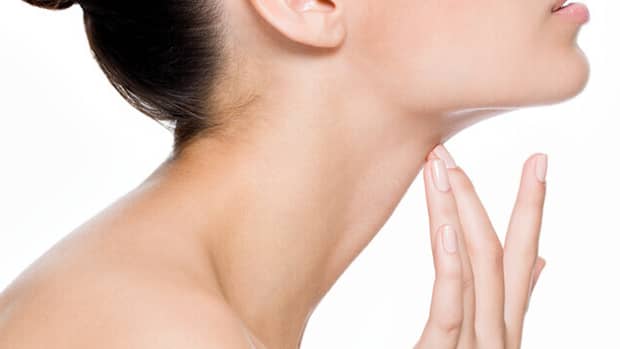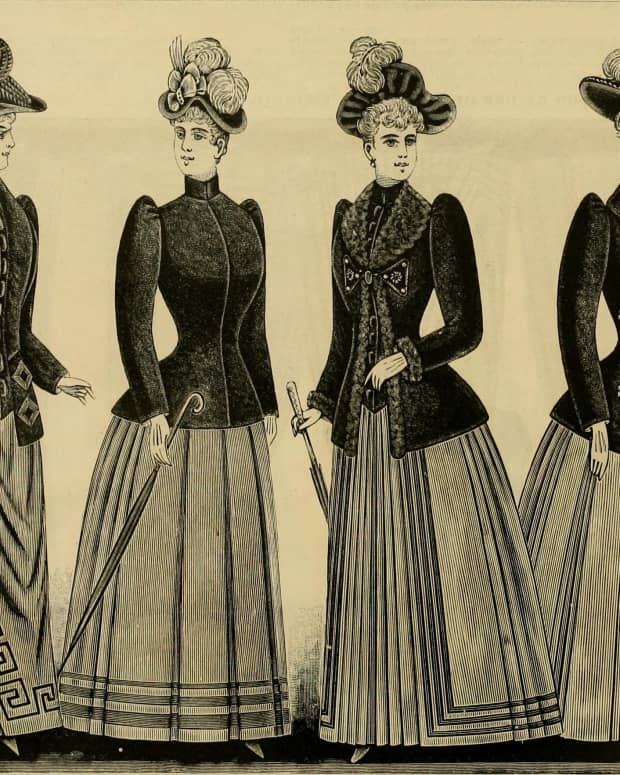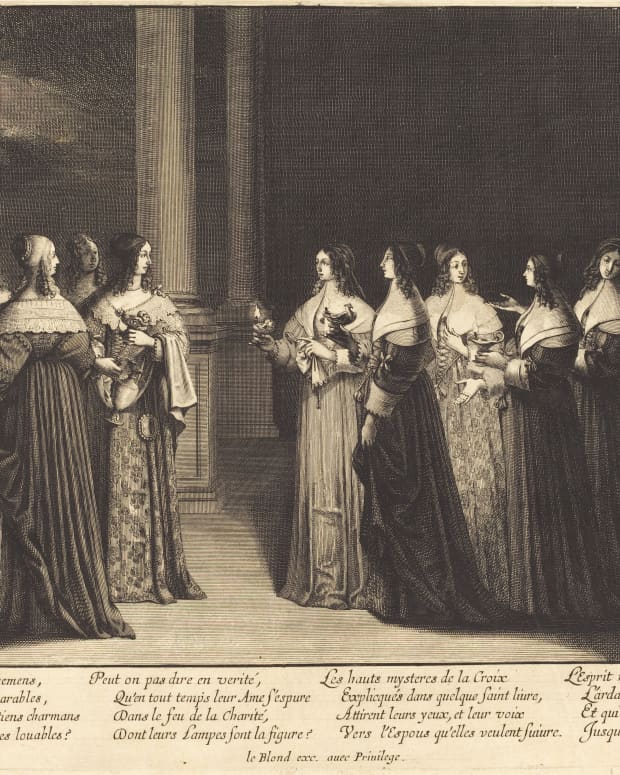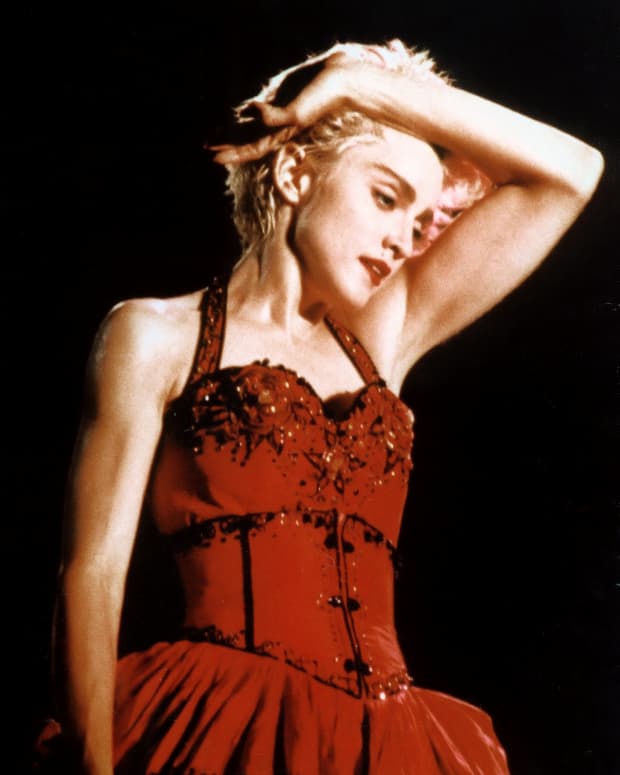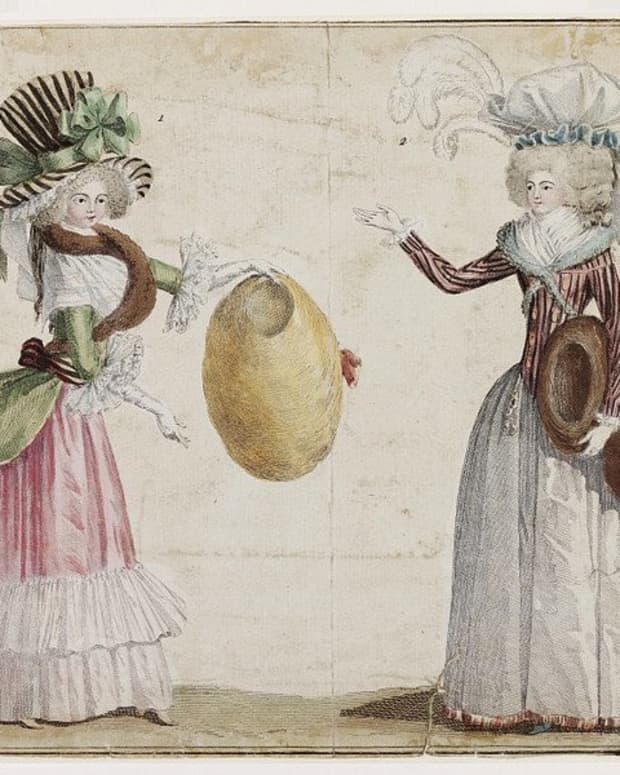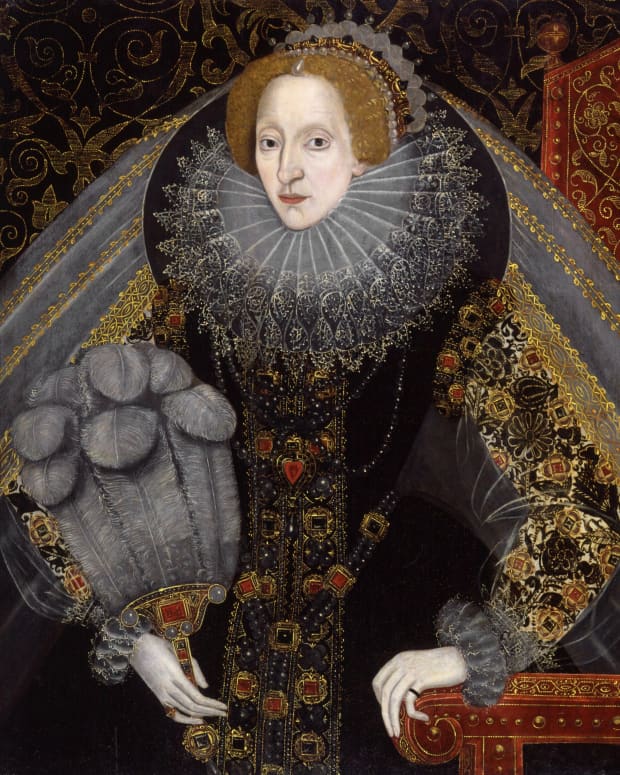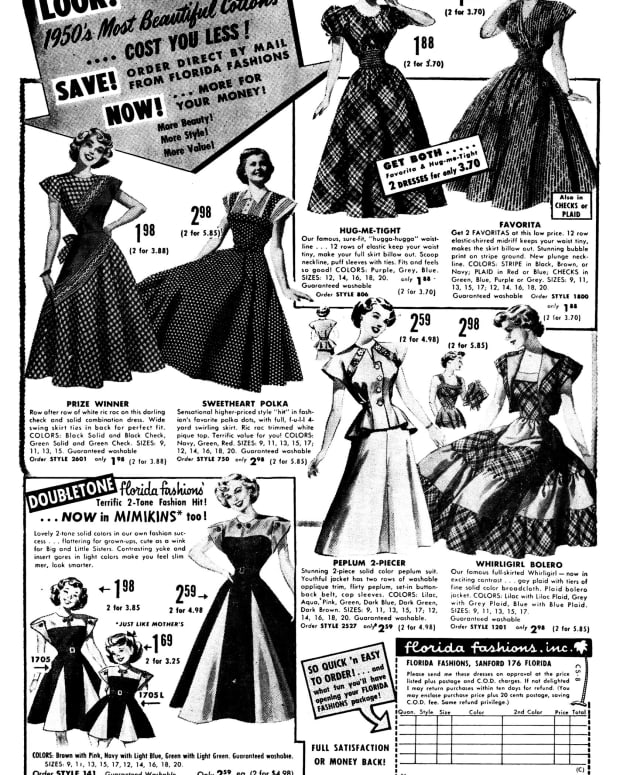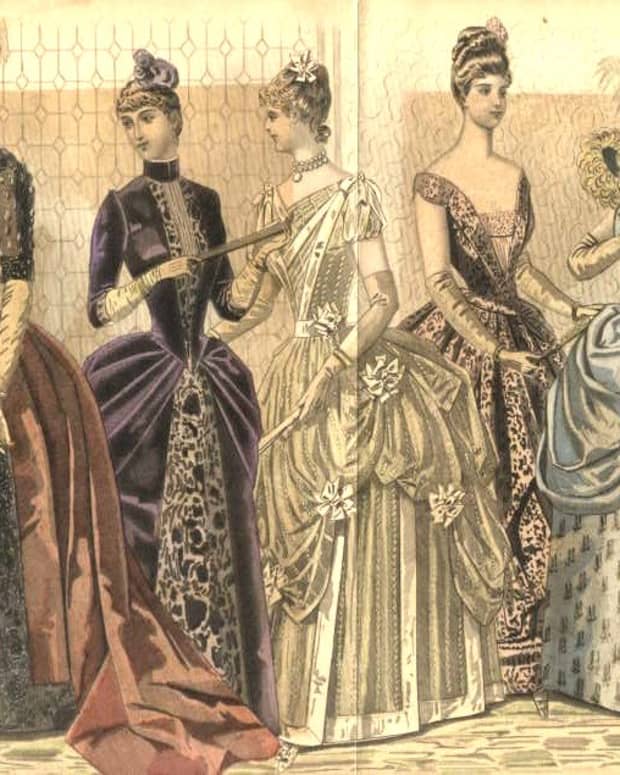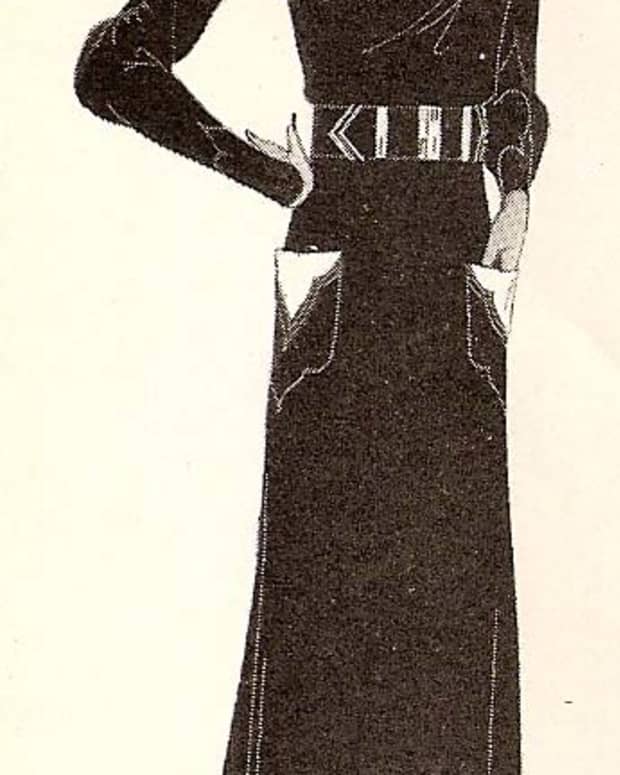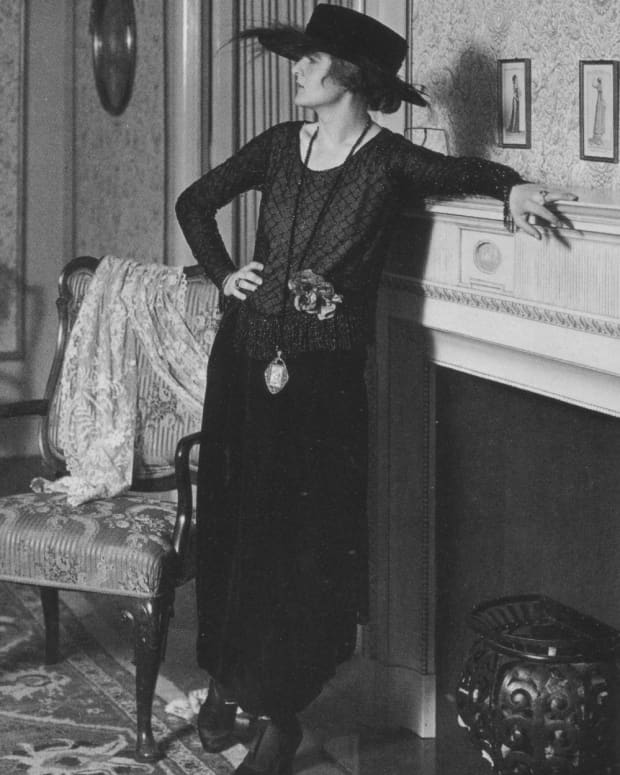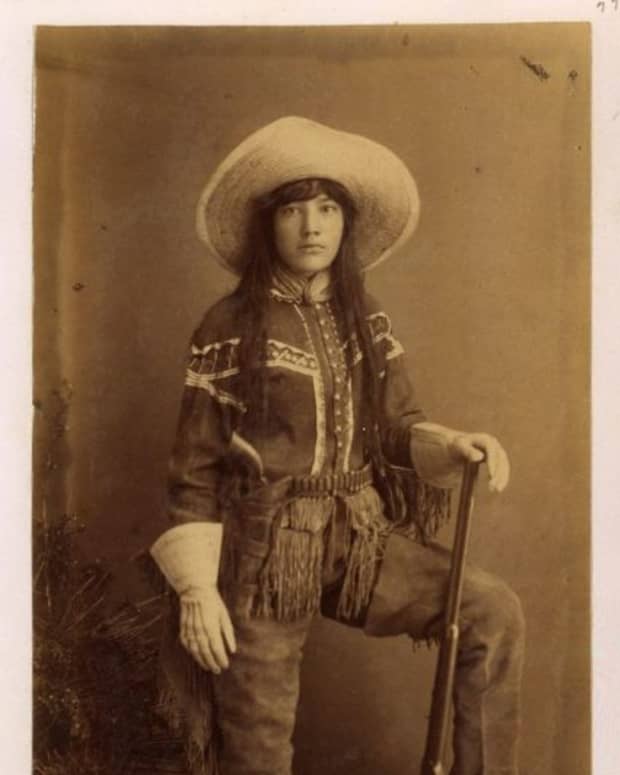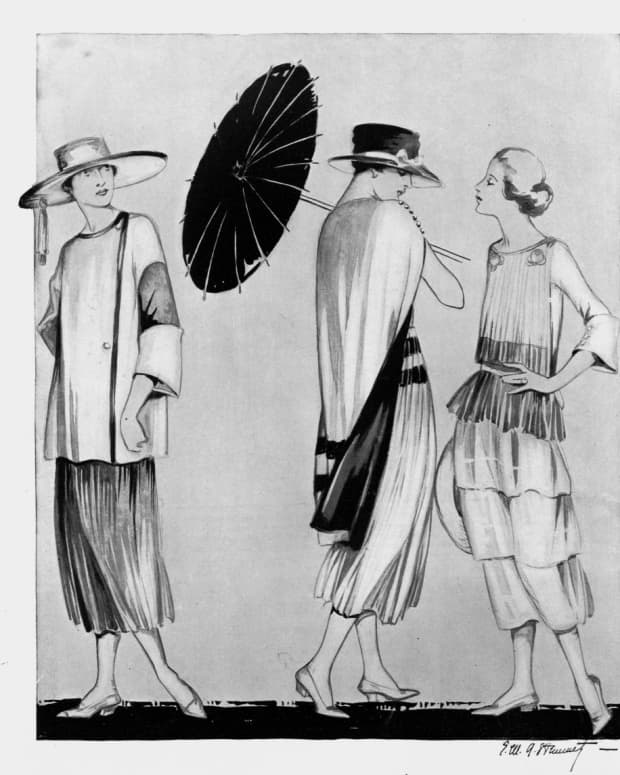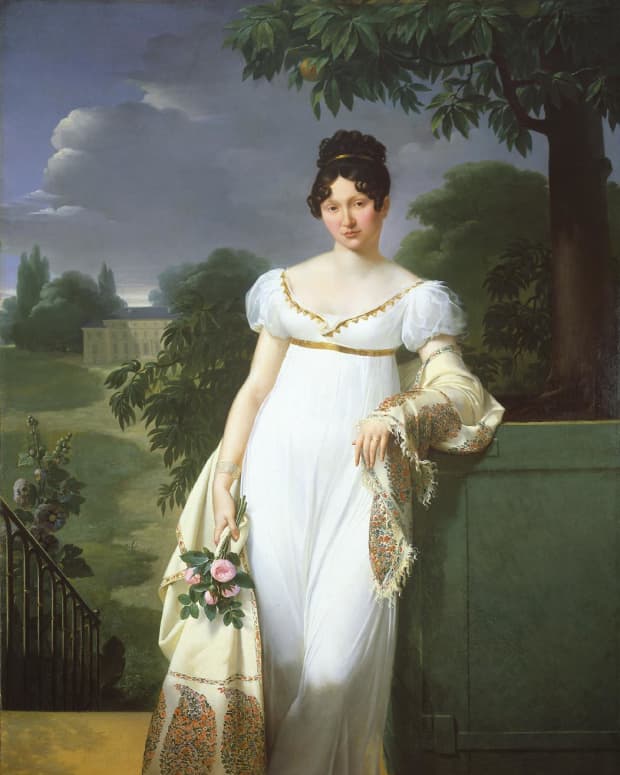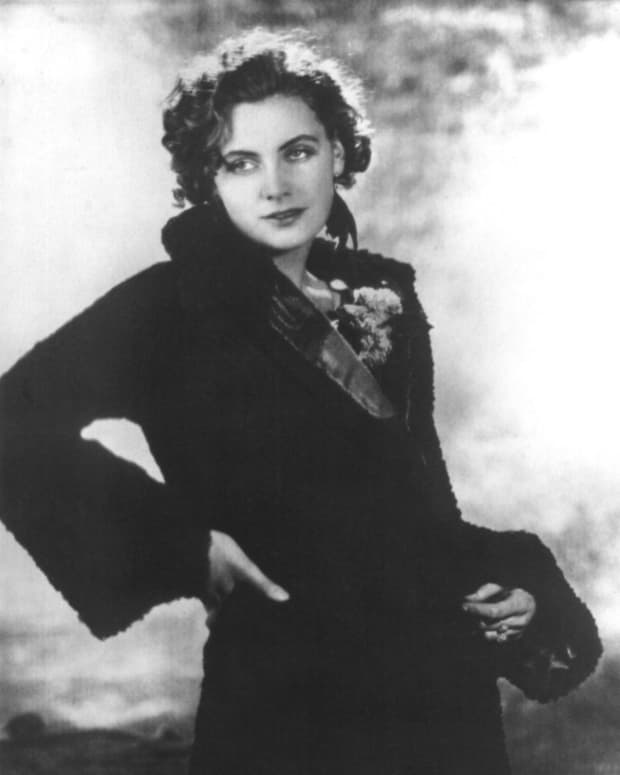How Women's Fashion Can Help Date Old Photographs
Dolores's interest in fashion history dates from her teenage years when vintage apparel was widely available in thrift stores.
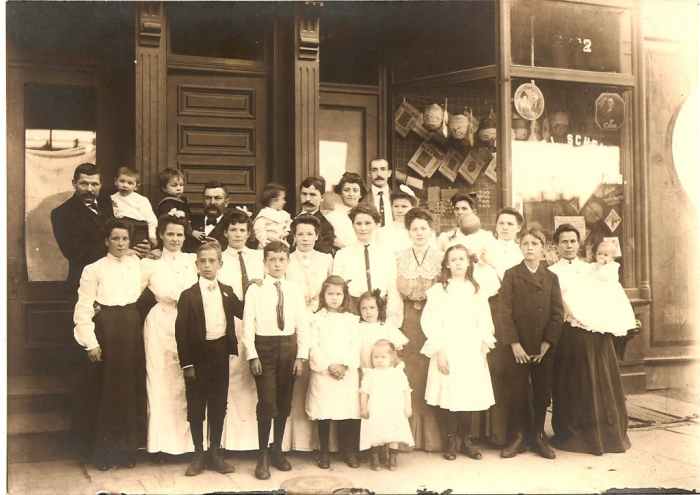
Black skirts and white blouses, but without the huge puffs of the 1890s, plus the white dress with layers of lace, place this photo in the early 1900s.
Old family photo.
Dating Old Photographs by Clothing
Trying to identify ancestors while looking at old photographs can be a bit of a challenge, especially if you have one of those families where the same face reappears every generation or so. One method is to study what kind of clothing a subject is wearing in a portrait. This is easiest if the subject is female as women's fashions change more quickly than for men.
In general, old photos of family members were posed and usually taken by professional photographers. Even when people began to use their own cameras, subjects were often posed. People dressed their best for these portraits in new, fashionable garments. Pictures of younger women typically show contemporary style trends. Older women often stick to older styles. You may see this stereotype portrayed in older movies and TV shows where old women wore costumes that were a generation outdated.
If the subject of your picture lived in a city, clothing style will better reflect the style of the day than if she lived in a rural area. People on the higher end of the economic spectrum also appear more fashionable than the less well off.
That is not to say that all older, rural, or lower class people were way behind the time. Sometimes the lag was only a few years. And less well off women with good sewing skills could copy high-end fashion using inexpensive fabrics.
What to Look for When Dating Photos
- People dressed in their newest garments for photographic portraits
- Clothing can help date a photograph within 5–10 years
- Full body shots are easiest to date
- Garment details can help date an old photograph
- Pictures of young people reflect contemporary styles
How to Use a Photo's Background and Other Clues to Determine Date
It helps to have some reference points and some knowledge of your family tree. Name and dates of your ancestors will help you figure out who a particular person is by looking at their clothing.
One exception is when people dressed in period costumes for parties. I have a lovely picture of a great aunt dressed like Marie Antoinette. Well, of course, they didn't have photography in those days so the picture could not have been from the 1790s.
Women's garments often made significant changes within a five-year span so you may be able to pinpoint a photograph into a small range of time. That does not mean that you can look at all your old photographs and pinpoint the exact date. You are looking for clues.
Look at the background for clues. I found a wonderful old photo of a young woman dressed in like a cabaret entertainer. Lucky for me there is a calendar in the background!
Snapshots that show a house can help if you know when your family lived in that house. You can also check the background for things like vehicles, TVs or TV antennas, and kitchen appliances.
Military uniforms change over the years. The same can be true for nurses. If your family member is wearing a World War I uniform, you can guess the picture was taken between 1915–1918.
Full Body or Head Shot
When trying to identify clothing styles, it is easier if you have a full body shot. That way, you can study hemlines, skirt draping, sleeve length, and waistlines.
Closer shots that only show the subject's head and upper torso will be more challenging. In this case, you must study details like collars and collar decoration, hair, hats, upper bodice (or blouse), shoulders, and the tops of the sleeves. While this will take some attention, you may note a significant detail.
Shoes and footwear may not be helpful in very old photos. Long skirts often covered footwear. Also, shoe and boot styles could be worn over long periods of time. High button boots, for instance, were popular for over thirty years.

1860s: Pagoda sleeves, low set shoulder line, flounced hoop skirt, and central part in her hair suggest this picture was taken in the 1860s.
Photo by Jacob Lundberg on wikimedia commons; public domain
How to Identify Fashions From the 1860s
Skirts
In the early 1860s, women wore wide skirts with flounces. Crinolines or hoops often created very large skirts. By the mid-decade, the skirt appears flatter in the front with most of the volume toward the rear. Skirts were often decorated with frills, trim, or heavy flounces.
In the mid-1860s, walking skirts featured cords to pull up the hem so the fabric would not drag on the ground.
Read More From Bellatory
Bodices
Pagoda sleeves of the early part of the decade were narrow at the shoulder and wide at the wrist, worn with white undersleeves which peeked out above the wrist.
Later in the decade, Bishop's sleeves were full, long sleeves gathered at the wrist. Bell sleeves fit tightly at the upper arm and widened at the elbow, open at the wrist. The bell sleeves of the late 1860s were cut so they curved up on the underside of the forearm.
Yolked bodices show horizontal seams that extend from the upper arms across the chest. Yokes were edged with small ruffles. The shoulder line, in general, was low with shoulder seams appearing at the upper arm instead of at the natural shoulder line.
Outfits appear somewhat high waisted. The lower edge of the bodice ended in two points just below the waist.
In the late 1860s, the bolero jacket ended above the waist, was worn open, and was decorated with braiding.
Hair was parted in the middle. Earrings often dangled and were ornate. Wide belts accentuated tiny waists. Brooches were worn on high collars.

1870s: The flounced high set bustle with train and hanging sausage curls at the back of her head suggest this photo was taken in the 1870s.
Photo by Jozsef Borso on wikimedia commons' public domain
How to Identify Fashions From the 1870s
Skirts
Skirts gathered toward the rear forming a soft bustle. Early 1870s bustles set high, then lowered toward the end of the decade featuring layers decorated with ruffles or edging. The bustle fashion ended by 1877 though skirts were still gathered toward the rear. (Bustles reappeared in the 1880s)
Skirts became more narrow at the end of the decade. A layered look featured an underskirt as well as copious ruffles, flounces, and lace.
The princess line was a dress without waist definition. The slim line extended below the hips where the dress was elaborately decorated with ruffles, ribbons, bows, and puffs.
Skirts featured trains.
Bodices
Women wore a long, tight bodice or a flat front type shirt. The bodice flared out over the hips. The late 70s saw a longer waistline and a very long bodice that fell below the hips and could reach the knees. Necklines were low and square for evening. Day-time necklines could be V-shaped with an insert. High necks worn for daytime featured lace and ruffles. Many necklines showed low in front and very high at the back of the neck.
The shoulder line returned to a natural position.
Sleeves fit tightly at 3/4 length or to the wrist.
Bows were everywhere, on skirts and bodices, and were often very large.
Hair was gathered tightly at the sides of the head and piled into elaborate coils on the top and toward the back. Loose curls hung down at the back. Bangs appeared in the mid-70s and were often crimped.

Note the horizontal, slightly diagonal draping of the narrow skirt. Bodice flares below the waist and fits the hips. Also note bangs indicating. Circa early 1880s
Princess Elizabeth of Hesse; wikimedia commons; public domain
How to Identify Fashions From the 1880s
Skirts
Women's clothes were ornate and highly decorated with embellishments. Narrow skirts draped toward the back. The mid-1880s saw an extreme bustle, a horizontal projection at the rear. Bustles disappeared by the end of the decade.
Late 1880s skirts featured horizontal, drooped, or slightly diagonal draping created by tucked up over-skirts.
Polonaise-style meant that the front of the skirt was pulled up and toward the back exposing an underskirt.
Bodice
Bodices flared out some below the waist and were highly embellished. High necks often featured white lace or small white ruffles at the upper edge.
Sleeves were tight, stopping just short of the wrist. Later in the decade, sleeves loosened and featured light vertical puffs above the shoulder and were gathered at the wrist.
Bangs were still worn in the 80s. As the style faded, women could be seen with longer, parted bangs. Hair was drawn up into a loose bun.

Note large sleeves; light blouse tucked in dark skirt, ties, and straw boater hats suggest the 1890s.
From State Library at Queensland, Austrailia; wikimedia commons; public domain
How to Identify Fashions From the 1890s
During the 1890s, women's clothing simplified and appeared quite conservative compared to the ornate styles of the previous decade. Tailored suits introduced a slightly masculine look.
Loose blouses replaced tight bodices. Women often wore light-colored blouses tucked into dark skirts. Bell-shaped skirts fit tightly over the hips, flaring wide at the hem in the early part of the decade.
Sleeve details are the best way to date photos from this time.
- 1890 featured tight sleeves with a slight puff above the shoulder.
- By 1892 the upper arm and shoulder were encased in a huge puff called leg-o-mutton sleeves.
- In 1896 the huge sleeves deflated some. By 1897, though the puff remained, it was greatly diminished. Bows decorated a high neck now topped with a ruffle.
- Sleeves in 1898 were tight with a high puff ball at the top of the arm.
Long ties and bow ties were plain or frilly. Wide belts were popular. Straw boater hats were worn in warm weather. Hair was worn in a soft puff, topped with a loose bun.

1900–1910: The huge hat on puffed hair, the loose fronted, yoked blouse decorated by tons of lace date this photo to the early 1900s.
Downloaded by FAE on wikimedia commons; public domain
Identifying Fashions From 1900–1910
A pigeon fronted S-shaped profile dominated the turn of the century. Skirts hugged the hips and widened near the hemline. Though the shirt waist and dark skirt remained popular, new new, soft femininity returned but with looser corseting.
The look was somewhat broad shouldered and top heavy with a puffy look and undefined bosom. Blouses were highly embellished with layers of lace, ruffles, and ribbons. The loose blouse tucked into a wide belt or cummerbund.
High necklines were often adorned with a small ruffle as well as lace. V necks were popular. Mid-decade featured a yolk fronted blouse decorated with lace. Bolero jackets and higher waistlines created by wide belting were popular mid-decade.
1908 saw a new slimming style paired with gigantic hats often decorated with feathers.

1910–1920: Simple collars and above the ankle hemlines date this picture to the 1910s. Note longer tunic type blouse.
State Library at Queensland, Austrailia; wikimedia commons; public domain
How to Identify Women's Fashions From 1910–1920
Though the blouse and dark skirt remained popular, fashions loosened up into a more comfortable style. Sheath-style dresses showed more ankle. Waistlines were less restricted. Tunic tops hung below the hips.
Sleeves were wide at the top and tapered toward the wrist.
The huge hats of the previous decade continued on for some years but grow smaller and more simple mid-decade.
By 1915, with the onset of WWI, a military look influenced women's clothing. Look for trench coats and military cut jackets. Hemlines rose to mid-calf and skirts widened in the War crinoline style.
The end of the decade saw a return to the looser sheath type dresses that would continue into the 1920s. Women often wore their hair in a low, loose bun. The sides often appear to be bobbed,

The crimped, bobbed hair; horizontal headbands; and jaunty air date this photo to the 1920s.
U.S. Library of Congress; wikimedia commons; no known copyright restriction
How to Identify 1920s Fashions
The loose style emerged into a look that de-emphasized the bust, waist, and rear. Tubular dresses featured a drop waistline with a low set belt. Early in the decade, hemlines fell below the calf. Hair was often bobbed and permed.
By the mid-1920s hemlines rose to the knees. While we associate the time with flappers, more conservative women still wore shorter hemlines than in the past. Long necklaces and bangle bracelets were popular. Wide headbands were worn across the forehead and even appeared on brides. Cloche hats were without brims.
A casual new look featured jersey knits, sportswear, pleated skirts and sweater sets with long, loose, pocketed cardigans. V-necks were often decorated with a bow. Suits, coats, and sweater often sported a long, low slung lapel.
In the past, short sleeves were rare. If a woman in a photo is wearing short sleeves, chances are that the picture was taken after 1920.

1930s - plain bob haircut; normal waistline;belt; tight at the hips skirt, looser near hem; untied pussy cat bow
Downloaded by freeparking on wikimedia commons; CCA
How To Identify Women's Fashions of the 1930s
The Great Depression introduced a new conservative style. Hemlines could be just below the knee or mid-calf. Bobbed hair was simple with less perming but gentle waves.
Dressy clothes featured a sleek look and often included diagonal lines. A bias cutting technique created a smooth, swinging, graceful silhouette. The waistline rose to more natural lines. Dresses and skirts were often belted.
Small collars, cowl collars, and Peter Pan collars appeared on plain cotton blouses, dressy blouses, and dresses. Blouses often featured soft bows or pussy cat bows at the neck and often featured short sleeves or high cap sleeves.
Prints came in geometric Art Deco styles, dots, floral, and novelty prints.
Sportswear became prevalent. Wide-legged lounge pants showed up at home or at the beach. A naval look cropped up in wide-collared, V-neck blouses with loose bows.
Hats were brimmed, sometimes wide brimmed with flat crowns. Some hats resembled cloche hats with a narrow brim.
At the end of the decade, hemlines rose to just below the knee. Dresses and suits began to feature small shoulder pads.

Knee length hems, simple design, shoulder pads and longer hair date this one to the 1940s.
UK Ministry of Information WWII Official Collection; wikimedia commons
How to Identify Women's Fashions of the 1940s
Restrictions on the use of materials used to make clothing (due to WWII) resulted in knee-length hemlines and simple, classic lines. Shoulder pads and a slightly military look became popular.
Hair was worn longer than the previous decade in soft, low slung rolls. Hair nets and snoods appeared. As in World War I, women often appeared in uniform for work or volunteer service.
The trim look emphasized the bust, hips, and waistline.
Popular prints included polka dots and tropical flora.
In the late 1940s, post-war fashions introduced an hourglass silhouette with a tiny waistline and wide, crinoline skirts worn below the knee. Suits featured tight pencil skirts.

Short hair; longer and wider skirts date this pic to the 1950s.
Deutche Fotothek, wikimedia commons; CCA
How to Identify Women's Clothing of the 1950s
Casual clothing became more prevalent in the 1950s. Snapshots show women wearing pedal pushers, slacks, or shorts.
An hourglass silhouette featured tiny waists, an ample bustline, and hips, all highlighted by swing skirts (like Dior's New Look).
Suits and sweater sets often featured pencil, or tight skirts and short sweaters or jackets.
Hair was cut shorter than in the 1940s.
Topper coats were large and loose, worn over slacks or slim skirts.
Young women often wore jeans that were sometimes rolled into a cuff. Saddle oxfords or tennis shoes were worn with jeans. Some young ladies wore short socks with a wide, circular skirt.

A wide variety of mid 60s styles including bouffant hair, short skirts, go-go boots, middriff top, and Bermuda shorts.
National Archives of Norway; wikimedia commons; no known copyright
How to Identify 1960s Fashions
Early 1960s fashions looked much like the 50s but quickly loosened up. The mature look gave way to a youthful and playful style. Shift dresses and shirt-waisted dresses came in floral or geometric prints. Hems grew shorter.
Early 60s hair puffed large and smooth. The new casual style showed women in photographs wearing very casual clothes like Bermuda shorts (plain or plaid) and mid-midriff tops.
As the decade progressed hemlines shortened to mini skirts. Sheaths loosened into tent dresses in bright colors and bold prints. Pale lipstick is obvious even in black and white photos. Makeup emphasized the eyes. Jewelry was cheap and chunky.
Late in the decade, casual style offered blue jeans, tee shirts, chunky boots, and sandals. Bell bottom pants flared out below the knee. Ethnic and historic influences featured Dashiki shirts, fringed cowboy jackets, and long necklaces.
More photographs appeared in color than in black and white.

Loose, carefree hair, denim jacket and pants, short waistline, and natural look suggest the 1970s. All you really need to see is the weird yellow tint.
By Infrogmation of New Orleans on wikimedia commons
How to Identify Women's Fashions of the 1970s
It's easy to identify a photograph from the 1970s because they all (almost) turned orangey/yellow. It's your biggest clue if you're looking at a snapshot.
The hippie look of the past decade continued on for some time. Denim was king. Edwardian style prairie dresses featured flounces and small floral prints in styles that often appear in wedding photos. Peasant skirts, dresses, and skirts featured embroidery and loose, wide sleeves. Western-style was popular with Western cut shirts, leather vests, wide-brimmed hats, and fringed jackets.
Waistlines rose, sometimes above the natural waist.
Bright, bold colors gave way at the end of the decade to earth tones in orange, brown, tan, and avocado green.
Pantsuits were worn with blouses with bows.
Later in the decade jersey wrap dresses hung below the knee. The bell bottoms reduced to a flare, becoming straight legged. Slogan tee shirts were worn with jeans.
Chunky heeled and high platform shoes were popular.
Long hair was worn straight or feathered. The shag haircut was a choppy, layered style. Large sunglasses were worn by everyone.
The late decade saw kaftan style dresses in bold prints. Punk and disco styles became popular.
The 1970s offered a wild, mishmash of looks that depended on individual style.
Dating Clues in Old Photographs - Resources
Fashion trends can only offer clues to the age of a picture. Styles bleed over into the next decade, and some women embrace the styles of youth even after those fashions become passe.
Research old photographs by studying pictures from various decades to begin to understand the look of each period.
Check out Wikimedia commons and look for "fashion by decade."
Find copies or online reprints of old catalogs to see the types of clothing worn by regular people.
Old Life Magazines are full of pictures of people.
Most libraries offer books about clothing. Start with an encyclopedia type book that presents clothing from an extended period of time.
Remember that old fashion plates and high style magazines are an early introduction to details of styles. Normal people would have worn the styles a bit later than the publication date of the plate.
Look at books as well. Some helpful books include:
Out of Style - An Illustrated Guide to Vintage Fashions by Betty Kreisel Shubert
Dressed for the Photographer - Ordinary Americans and Fashion 1840 - 1900 by Joan L. Severa


